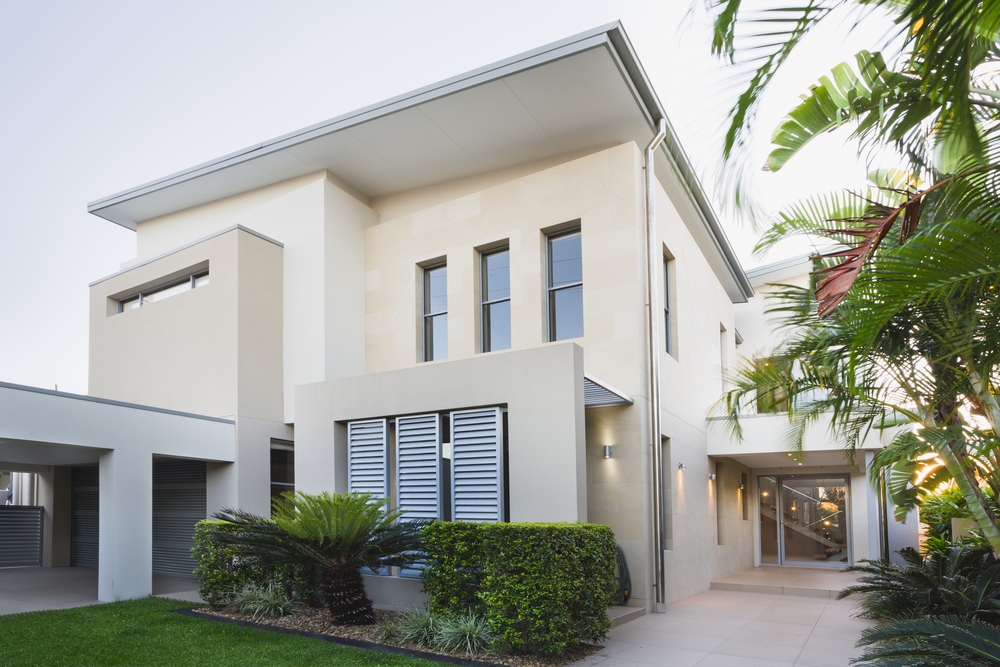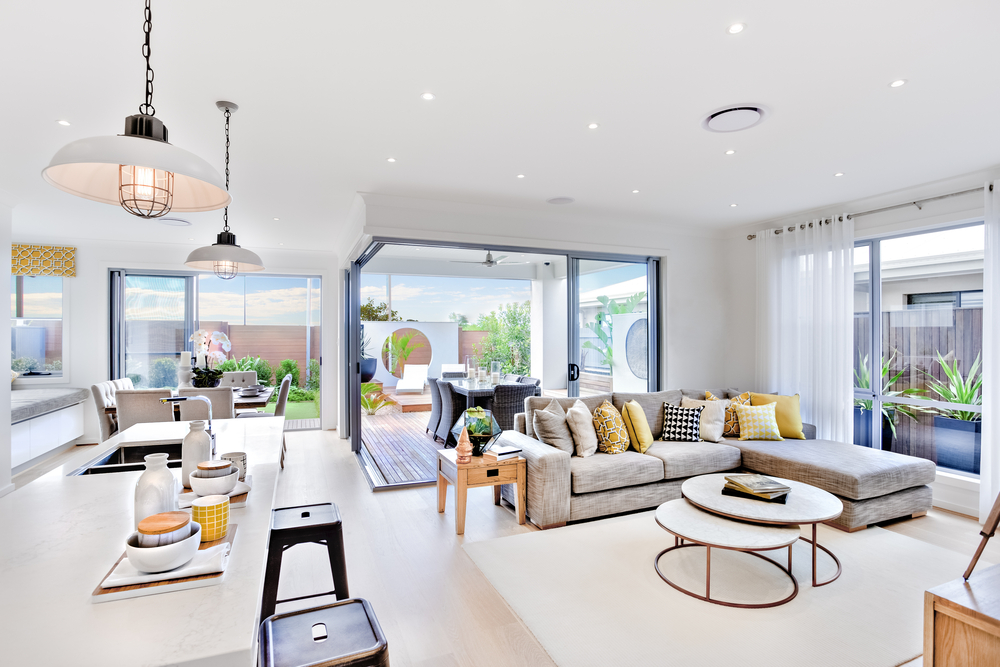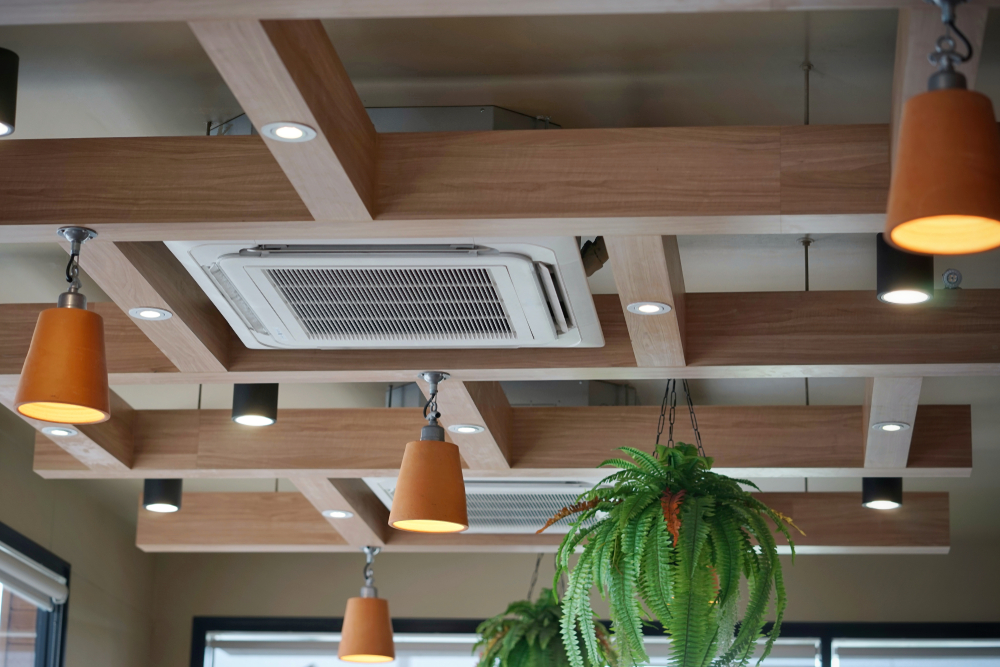Today’s homes favour open layouts and multiple levels, but keeping every area cool all year can be a real challenge. Experts at Gemin3 Air Conditioning know that achieving consistent climate control in these expansive homes isn’t just about power; it’s about precision. In this guide, we’ll break down smart zoning and ducted air conditioning strategies designed specifically for Sydney’s climate and home styles.
From tackling heat build-up on upper floors to managing airflow in open-plan living areas, we’ll show you how thoughtful design, efficient ductwork, and the latest in smart tech can work together to deliver comfort, control, and energy savings. Let’s get started!

Cooling Challenges in Multi-Storey Homes
Multi-storey homes, with their expansive layouts and varied room configurations, present unique challenges when it comes to maintaining a consistently cool environment. Homeowners and builders need to understand these challenges to design smarter, more comfortable homes. This section explores why upper floors often overheat, the common issues with even temperature distribution, and the critical importance of ductwork design and zone separation.
Heat Rises: Why Upper Floors Often Overheat
The fundamental principle that “heat rises” is a significant factor in the cooling challenges faced by multi-storey homes. When the lower floors are cooled, the warm air tends to ascend, leading to higher temperatures on the upper levels. This occurs due to the natural convection currents within the home, where warm air, being less dense, rises above the cooler air.
Factors Contributing to Overheating
- Inadequate Insulation: Poorly insulated roofs and walls can lead to excessive heat gain, contributing to the upper floors overheating.
- Solar Gain Through Windows: Large windows or skylights without adequate shading or glazing can increase heat on the upper floors.
- Roof Material and Colour: Dark-coloured roofing materials absorb more heat, which can then be transferred into the upper levels of the home.
Common Issues with Even Temperature Distribution
Keeping temperatures consistent across all floors is often tricky. A lack of uniformity in cooling can result in some areas being too cold while others remain uncomfortably warm.
Causes of Uneven Distribution
- Single Thermostat Systems: Homes with a single thermostat control struggle to maintain consistent temperatures across different floors and rooms. The thermostat’s location can lead to inaccurate readings and inefficient cooling cycles.
- Airflow Disparities: Variations in duct length and size can lead to inconsistent airflow, causing some rooms to receive less cooled air than others.
- Inadequate Return Air Pathways: Without proper return air pathways, the system cannot effectively circulate air, leading to pressure imbalances and poor cooling performance.
Importance of Ductwork Design and Zone Separation
Effective ductwork design and zone separation are critical components in overcoming the cooling challenges in multi-storey homes. These elements ensure that the air conditioning system operates efficiently, delivering comfort throughout the entire home.
Key Considerations for Ductwork Design
- Optimised Duct Layout: Properly sized and insulated ducts minimise heat gain and loss, ensuring that cooled air reaches all areas of the home effectively.
- Balanced Airflow: Designing the system to provide balanced airflow to each zone prevents overcooling or undercooling specific areas.
- Minimising Duct Leaks: Ensuring airtight ductwork prevents loss of cooled air, improving efficiency and effectiveness.
Benefits of Zone Separation
- Customised Comfort: Zoning lets you set different temperatures in each part of the home to match how each space is used.
- Energy Efficiency: By cooling only the areas in use, zoning reduces overall energy consumption, leading to lower utility bills.
- Enhanced Control: Advanced zoning systems offer precise control over the cooling process, allowing you to adjust settings based on occupancy and usage patterns.
Zoning Strategies for Two-Storey and Multi-Level Homes
Effectively managing the climate can be challenging without a strategic approach. Zoning is a key component in ensuring comfort and energy efficiency. You can tailor the environment to your lifestyle needs and minimise energy consumption. Below are some effective zoning strategies.
Separate Zones for Each Floor
One straightforward zoning approach is to assign separate zones for each floor of the home. This approach allows for individual temperature control on each level, catering to the distinct usage patterns and thermal characteristics inherent in multi-storey homes.
- Upper Floors: Typically, upper floors tend to be warmer due to rising heat. A dedicated zone for the upper floors allows the air conditioning system to address this heat accumulation effectively, maintaining a comfortable environment.
- Ground Floors: The ground floor may experience cooler temperatures, especially in homes that have a slab-on-ground construction. Zoning this area separately ensures that heating needs are met without overcooling the upper floors.
Night vs. Day Zones
An innovative approach to zoning in multi-storey homes is to create night and day zones, typically separating bedrooms from living areas. This method aligns with the natural rhythm of daily activities, optimising energy usage based on occupancy patterns throughout the day.
- Day Zones (Living Areas): During the day, living areas such as the kitchen, dining room, and living room are frequently used. Zoning these areas separately allows for targeted cooling or heating during peak usage times.
- Night Zones (Bedrooms): Bedrooms are primarily used during nighttime hours. By zoning these areas separately, you can maintain a comfortable sleeping environment without expending energy to condition the entire home.
Smart Controls and Timers for Staggered Operation
The integration of smart controls and timers is essential in optimising the effectiveness of zoning strategies. These technologies allow for precise control over each zone, enabling staggered operation that aligns with the household’s routine and preferences.
- Smart Thermostats: Smart thermostats ensure that each zone is conditioned only when necessary, enhancing comfort and efficiency.
- Timers and Schedules: By setting timers, you can automate the operation of your air conditioning system. For example, living areas can be cooled in the morning and afternoon, while bedroom zones can be activated in the evening.
- Remote Access and Control: Many modern systems offer remote access through mobile apps, allowing you to adjust settings from anywhere. This feature is useful for unexpected schedule changes, ensuring that the home is always comfortable upon arrival.

Designing Zoning for Open-Plan Living Spaces
Open-plan living spaces have become a popular architectural trend, offering a seamless flow between living, dining, and kitchen areas. However, these expansive spaces present unique challenges when it comes to air conditioning. Effective zoning is the key to maintaining a comfortable environment across all functional areas. Let’s discuss the essential aspects of designing zoning for open-plan living spaces.
Airflow Considerations for Large, Open Rooms
Good airflow is key to keeping big open spaces comfortable. The first step is to assess the layout and size of the space. Here are some key considerations:
- Airflow Distribution: You must ensure that airflow is evenly distributed to prevent hot or cold spots. This requires strategic placement of air vents and return air grilles. The use of multiple vents can help spread the conditioned air more uniformly.
- Vent Placement: Position vents where they can effectively circulate air throughout the space. Typically, vents should be placed in areas where airflow will not be obstructed by furniture or architectural features. Ceiling vents are often preferred in open-plan designs for their unobtrusive appearance and effective air distribution.
- Return Air Pathways: Adequate return air pathways must be established to facilitate the efficient movement of air back to the air conditioning unit. This ensures that the system can recycle air.
Grouping Functional Areas into Separate Zones
Zoning open-plan areas gives you more control over comfort and cuts down on energy waste. Here’s how to approach zoning in these environments:
- Identify Key Areas: Start by identifying the main functional areas within the open space, like the kitchen, dining, and living zones. Think about how each is used, how many people occupy them, and how much sun they get throughout the day.
- Use Design to Define Zones: Use visual cues like half-walls, furniture placement, or flooring changes to create separation. These boundaries help zoning systems manage each space more effectively.
- Add Smart Controls: Smart zoning controls allow each zone to be adjusted independently based on time of day or activity. With remote access and automation, you can make sure every zone feels just right.
Balancing Comfort Between Living, Dining, and Kitchen Areas
Balancing comfort between the living, dining, and kitchen areas is challenging due to varying heat loads and occupancy levels. Here’s how to achieve an optimal balance:
- Kitchens Need Extra Cooling: Kitchens naturally generate more heat from appliances and cooking. To avoid overheating, it’s often best to give them their own zone with separate temperature settings.
- Match Cooling to How You Use Each Area: Living rooms may need more cooling in the evenings, while dining rooms might be used less often. Smart sensors or schedules can help adjust temperatures to match these patterns.
- Don’t Forget Ventilation: Good airflow helps remove heat and odours, especially in cooking areas. Make sure your cooling system works with your home’s ventilation for best results.
Smart Zoning: Integrating Technology for Greater Control
Adding smart zoning to your ducted system boosts comfort, cuts energy use, and gives you more control, especially in large or open-plan homes. By utilising advanced systems that leverage Wi-Fi connectivity, temperature sensors, and automation, you can experience a new level of personalised climate management. Let’s explore the advantages of Wi-Fi-controlled zoning systems, the role of temperature sensors in different zones, and the benefits of remote access and automation.
Advantages of Wi-Fi-Controlled Zoning Systems
Wi-Fi-controlled zoning systems represent a leap forward in home climate management. These systems allow you to divide your living spaces into distinct zones, each of which can be independently controlled for optimal comfort and efficiency. Here are some key benefits:
- Comfort That Fits Everyone: Each zone can be set to different temperatures, so everyone in the household can enjoy their ideal climate, whether cooler in the bedroom or warmer in the home office.
- Less Waste, Lower Bills: You only cool or heat the rooms you use, which means you save energy and cut costs.
- Simple to Use: These systems come with easy-to-use apps for phones and tablets, so adjusting settings is a breeze.
- Works with Smart Homes: They’re compatible with smart home devices like Alexa and Google Home, so you can change the temperature with just your voice.
Using Temperature Sensors in Different Zones
Temperature sensors are critical components in smart zoning systems, providing real-time data that informs how each zone is managed. Here’s how they contribute to greater control and efficiency:
- Accurate Temperature Monitoring: Sensors placed strategically throughout the home monitor the temperature in each zone. This helps the system adjust on its own, keeping rooms comfortable without needing constant tweaks.
- Adaptive Control: By analysing data from temperature sensors, the system can automatically adapt to external conditions, such as sunlight exposure or occupancy changes, adjusting the heating or cooling output accordingly.
- Reduced Wear and Tear: By ensuring that the air conditioning system only operates when necessary, temperature sensors help reduce unnecessary strain on the components, potentially extending the lifespan of the system.
Remote Access and Automation for Efficiency
The integration of remote access and automation features in modern zoning systems provides unparalleled convenience and efficiency for homeowners.
- Remote Control: This is useful for adjusting settings on the go, ensuring the home is always at the desired temperature upon arrival.
- Automated Scheduling: Smart systems allow users to set schedules based on their daily routines, automating the temperature adjustments throughout the day. This ensures that energy is used efficiently only when needed, such as lowering temperatures at night or during work hours when the home is empty.
- Energy Usage Insights: Many systems offer detailed reports and insights into energy consumption patterns, helping you decide about usage and identify potential areas for improvement.
- Integration with Weather Data: Advanced systems can also factor in local weather forecasts, adjusting your operations proactively to maintain comfort while optimising energy use.
Staying comfortable in a Sydney home, especially one that’s multi-storey or open-plan, takes more than just cooling power. With smart zoning, tailored ductwork, and the right tech, you’ll enjoy better airflow, lower energy bills, and personalised comfort in every room. Ready to upgrade your home’s climate control? Contact Gemin3 Air Conditioning for a customised solution that fits your lifestyle.






